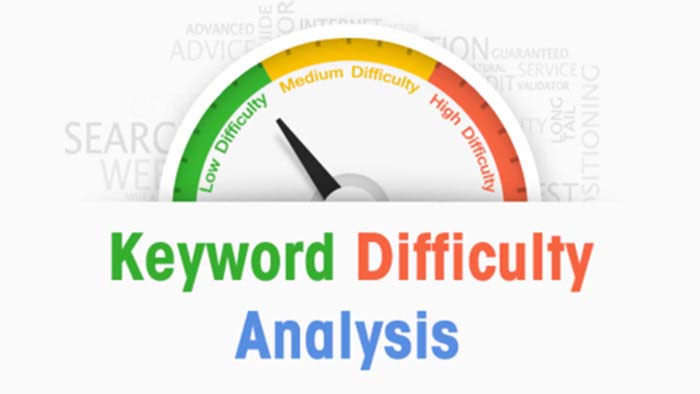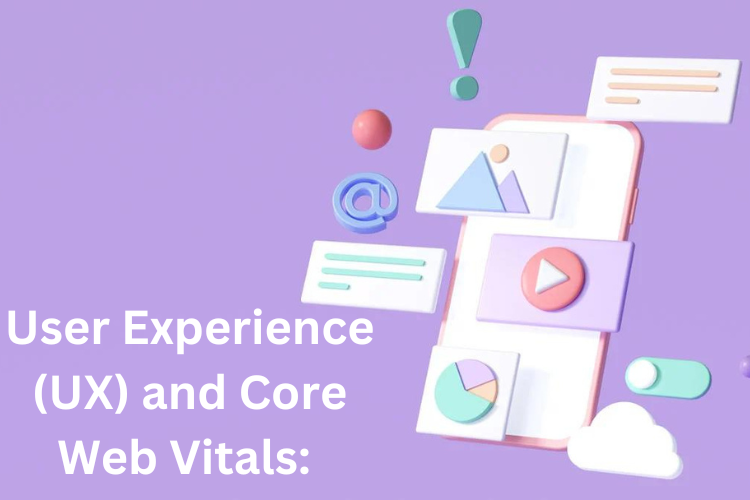What is SEO (Search Engine Optimization)?
SEO (Search Engine Optimization) is a process of making a website search engine friendly so it can rank higher in search result pages of Search engines like Google.
It involves various techniques and strategies that aim to enhance a website’s relevance and authority in the eyes of search engines like Google, Bing, and Yahoo.
SEO plays a crucial role in driving organic, non-paid traffic to a website, ultimately leading to improved online visibility, brand awareness, and potential customer acquisition.
The Fundamentals of SEO: Key Concepts and Terminology
To understand SEO better, it is essential to familiarize yourself with key concepts and terminology.
Here are some fundamental elements of SEO:
Keywords:
These are specific words or phrases that users enter into search engines to find information.
Proper keyword research helps identify relevant and high-traffic keywords for targeting.
On-Page Optimization:
As the name suggests, on-page SEO involves optimizing elements within a webpage to make it more understandable for search engines.
This includes optimizing meta tags, headings, URL structure, content, and internal linking.
Off-Page Optimization:
Off-page SEO focuses on activities outside the website that contribute to its overall authority and reputation.
This includes building backlinks, social media engagement, and online brand mentions.
Technical SEO:
Technical SEO handles the technical aspects of a website, such as crawlability, indexability, and page speed.
It includes factors such as website speed, mobile-friendliness, structured data, and XML sitemaps.
Rank Tracking:
Monitoring keyword rankings allows you to assess the effectiveness of your SEO efforts and make data-driven optimizations.
How do Search Engines Work?
Search engines like Google, Bing, and Yahoo use complex algorithms to deliver the most relevant and valuable results to users’ search queries.
Below are the key points on which search engines work:
Crawling:
Search engines use automated software called crawlers or spiders to discover and scan web pages across the internet.
These crawlers follow links from one page to another, collecting information about the content and structure of each page they encounter.
Indexing:
After crawling a web page, search engines index the information they have collected.
They create a searchable index, which is essentially a large database of web page information.
The index includes details about the page’s content, meta tags, URL, and other relevant data.
Ranking:
When a user enters a search query, the search engine retrieves relevant results from its index based on various ranking factors.
These factors include the relevance of the content to the search query, the quality and authority of the website, user experience signals, and other factors specific to each search engine’s algorithm.
Displaying Results:
The search engine presents the most relevant and high-quality results to the user on the search engine results page (SERP).
The results are typically displayed in order of perceived relevance and quality, with the top-ranking results appearing at the top of the page.
The SERP may include a mix of organic search results, paid advertisements, featured snippets, local search results, images, videos, and other types of content, depending on the nature of the search query.
Algorithm Updates:
Search engines constantly refine and update their algorithms to improve the quality of search results and combat spam or manipulation.
These algorithm updates consider various factors, such as user behavior, user feedback, and emerging trends, to provide the best possible search experience.
Search Engines Primary Ranking Factors:
Relevance:
Search engines aim to deliver results that are most relevant to the user’s search query.
They analyze various elements on a web page, including the content, title tags, headings, and meta descriptions, to determine its relevance to specific search terms.
Authority:
Search engines evaluate website authority and credibility through factors like backlinks (number and quality), site reputation, and content expertise.
Backlinks, site reputation, and content expertise are key factors search engines consider when assessing website authority and credibility.

User Experience:
Search engines take into account user experience signals, such as page load speed, mobile-friendliness, and site structure, to ensure that users have a positive experience when accessing search results.
Freshness:
Search engines prioritize fresh and up-to-date content, particularly for topics or queries where recency is important.
They may give more visibility to recent news articles or recently published content that is relevant to trending topics.
It’s important to note that search engines keep their specific ranking algorithms confidential to prevent manipulation and maintain the integrity of search results.
SEO professionals and website owners employ various strategies and techniques based on best practices and insights gained from observing search engine behavior.
How SEO Works?
SEO works by following a set of best practices and strategies to make a website more search engine-friendly.
Search engines use multiple complex algorithms to determine which websites are most relevant and trustworthy.
These algorithms also aim to answer the user’s queries for specific search requests accurately.
SEO aims to align a website’s content, structure, and overall online presence with these algorithms to improve its visibility and rankings.
SEO involves both on-page and off-page optimization techniques.
On-page SEO ensures that webpages are optimized with relevant keywords, high-quality content, proper meta tags, and an optimized user experience.
Off-page SEO focuses on building a website’s authority and reputation through link building, social media engagement, and other external signals.
Search engines continuously update their algorithms to provide the best user experience and deliver the most relevant search results.
Therefore, SEO requires ongoing monitoring, analysis, and adjustments to keep up with algorithmic changes and industry trends.
On-Page SEO: Optimizing Your Website for Search Engines
On-page SEO refers to optimizing individual webpages to improve their visibility and rankings in search engine results. It involves several key elements:
Keyword Research:
Conducting thorough keyword research helps identify relevant keywords and phrases that users are searching for.
These keywords should be strategically incorporated into the webpage’s content, headings, meta tags, and URLs.
High-Quality Content:
Creating valuable, well-written, and engaging content is essential for on-page SEO.
Content should be informative, unique, and structured with proper headings and subheadings.

Meta Tags:
Optimizing meta tags, including the title tag and meta description, helps search engines understand the webpage’s content and improve click-through rates from search results.
URL Structure:
Using descriptive and keyword-rich URLs that reflect the content of the webpage can positively impact its visibility and click-through rates.
Internal Linking:
Proper internal linking helps search engines navigate and understand the structure of a website. It also distributes authority and relevance among different pages.

Off-Page SEO: Building Authority and Enhancing Online Presence
Off-page SEO focuses on activities that take place outside the website but contribute to its overall authority, reputation, and visibility.
Off-page or Off-site key strategies include:
Link Building:
Link building is important for off-page SEO. It means getting good reference backlinks from relevant and trusted websites.
Search engines consider backlinks as votes of confidence, indicating that a website is trustworthy and authoritative.
Engaging in outreach, guest blogging, and creating valuable content that naturally attracts backlinks can help boost a website’s authority.
Read: Referring Domains vs Backlinks: What’s the Difference?
Social Media Engagement:
Social media platforms provide an opportunity to engage with the target audience, share content, and amplify brand awareness.
By actively participating in social media conversations, sharing content, and building a strong social media presence, you can enhance your website’s visibility and attract potential visitors.

Online Brand Mentions:
Building brand mentions and citations across the web without a direct link is another way to establish authority.
This includes mentions of your brand or website on other websites, social media platforms, forums, and industry directories.
Search engines take these mentions into account when evaluating a website’s credibility and authority.
Influencer Marketing:
Collaborating with influential individuals or industry experts can help broaden your reach and enhance your online presence.
Influencers can share your content, mention your brand, or provide testimonials, increasing visibility and driving more traffic to your website.
Technical SEO: Unleashing the Potential of Website Performance
Key areas of technical SEO include:
Website Speed:
Optimizing page loading times is crucial for user experience and search engine rankings.
Compressing images, minifying CSS and JavaScript files, utilizing caching mechanisms, and leveraging content delivery networks (CDNs) can help improve website speed.

Mobile-Friendliness:
In the era of growing mobile device usage, having a mobile-friendly website is crucial.
Responsive design, mobile optimization, and ensuring a seamless user experience across different devices are critical factors for search engines.
Website Structure and Navigation:
A well-structured website with clear navigation helps search engines understand the content hierarchy and improves user experience. Implementing logical URL structures, XML sitemaps, and breadcrumb navigation aids in proper indexing and crawling.
SSL/HTTPS:
Implementing SSL (Secure Sockets Layer) certificates and using HTTPS encryption provides a secure browsing experience for users.
Search engines prioritize websites with HTTPS, as it enhances security and protects user data.
Schema Markup:
Implementing structured data markup using schema.org vocabulary helps search engines understand the content on a webpage better.
It enables rich snippets, which can enhance search engine visibility and improve click-through rates.

Keyword Research: Unlocking the Pathway to Relevance and Visibility
Keyword research is vital when crafting a successful SEO strategy.
It involves identifying the words and phrases that users enter into search engines when looking for information related to your website’s content or offerings.
What is a Keyword?
A keyword is a word or phrase that represents the main idea or topic of a web page’s content.
Keywords play a crucial role in search engine optimization (SEO) as they help search engines understand the relevance and intent of a webpage and match it with user queries.
In SEO, keyword research is the process of identifying the most relevant and high-performing keywords for your website.
It involves analyzing search volumes, competition levels, and user intent to choose keywords that are likely to drive targeted organic traffic to your site.
Keywords can be categorized into two types:
- Short-tail keywords: Short-tail keywords are brief and more generic, consisting of one to three words, such as “shoes” or “digital marketing.”
- Long-tail keywords: Long-tail keywords are more specific and usually contain three or more words, such as “running shoes for women” or “digital marketing strategies for small businesses.”
Long-tail keywords often have less search volume but tend to have higher conversion rates due to their specificity
Here are the key steps in keyword research:

Brainstorming:
When starting it is important to create a list of relevant topics and themes related to your website through brainstorming.
Consider the products, services, or information you offer and the audience you’re targeting.
Keyword Tools:
Utilize keyword research tools such as Google Keyword Planner, SEMrush, Ahrefs, or Keyword.io to generate keyword ideas and assess their search volumes and competition levels.
These tools offer insights into the keyword search volume and competition.
Long-Tail Keywords:
Long-tail keywords are longer and more specific phrases that target a narrower audience.
They often have less competition and can drive highly relevant traffic to your website.
Incorporating long-tail keywords into your content can help improve visibility for specific search queries.

Competitor Analysis:
Analyze the keywords that your competitors are targeting.
Identify opportunities where you can outrank them or target different keyword variations to differentiate your website.
User Intent:
While identifying keywords understanding user intent is as crucial as optimizing website content for search engines.
Different users may have different intentions when searching for a particular keyword.
It’s important to align your chosen keywords with the user’s intent, whether it’s informational, navigational, or transactional.
This ensures that your content matches what users are looking for and increases the chances of driving relevant traffic to your website.
Keyword Difficulty:
Assess the competitiveness of keywords to determine the difficulty of ranking for them.
Keyword difficulty metrics provided by keyword research tools can help you identify keywords with manageable competition and higher chances of ranking.

Content Gap Analysis:
Identify keywords that your competitors are ranking for but are not targeted on your website.
This helps uncover content opportunities and allows you to create valuable, optimized content to fill those gaps.
Long-Term Strategy:
Keyword research should be an ongoing process.
Regularly monitor keyword performance, trends, and changes in user behavior to refine your keyword strategy and adapt to evolving search trends.
Content Optimization: Crafting Engaging and SEO-Friendly Material
Content optimization involves creating high-quality, relevant, and engaging content that satisfies user intent while being search engine-friendly.
Here are key considerations for content optimization:
Content Relevance:
Ensure that your content directly addresses the user’s query and provides valuable information.
Align your content with targeted keywords, covering the topic comprehensively and addressing related subtopics.

On-Page Elements:
Optimize your content on-page elements, such as headings (H1, H2, H3, etc.), meta tags (title tag, meta description), and URL structure.
Incorporate targeted keywords naturally into these elements to enhance search engine visibility.
Readability and User Experience:
Create content that is easy to read, well-structured, and visually appealing. Use subheadings, bullet points, and short paragraphs to improve readability.
Include relevant images, videos, or infographics to enhance user experience.
Keyword Placement:
Incorporate targeted keywords strategically throughout your content, including in the introduction, headings, subheadings, and body text.
However, avoid keyword stuffing, which can negatively impact user experience and search engine rankings.
Fresh and Updated Content:
Regularly update your content to ensure it remains relevant and reflects the latest information.
Fresh content signals to search engines that your website is active and provides up-to-date information to users.

User Engagement:
Encourage user engagement with your content through social sharing buttons, comments sections, and calls-to-action.
Engaged users are more likely to spend more time on your site, reducing bounce rates and improving search engine rankings.
Link Building: Establishing Trust and Authority in the Digital Landscape
Link building is the process of achieving backlinks from other websites to your own website. Search engines view backlinks as indications of trust, authority, and relevance.
What is a Backlink?
A backlink, also known as an inbound link, is a hyperlink on one website that points to another website.
Backlinks are crucial in SEO as they are considered as votes of confidence or credibility from one website to another.
They indicate to search engines that the linked website is reputable, trustworthy, and deserving of higher visibility in search results.
Search engines, like Google, consider backlinks as one of the key ranking factors for determining the authority and relevance of a webpage.
Websites with more quality and relevant backlinks from authoritative sources can achieve higher rankings in search results.
Focusing on quality backlinks always proves to be more beneficial than a large number of backlinks.
A backlink from a highly authoritative and reputable website carries more weight and influence in boosting a web page’s rankings.
On the flip side, backlinks originating from low-quality or spammy websites can adversely affect the rankings of a website.
Here are key strategies for effective link-building:
Creating Powerful Content:
Create powerful and informative content that naturally attracts links.
When your content is authoritative, unique, and well-researched, other websites are more likely to reference and link to it.
Read: 24 Best Content Writing Tools for SEO in 2023 [Free + Paid]
Guest Blogging:
Guest blogging refers to the practice of writing and publishing content on another person’s or organization’s blog or website as a guest author.
It is a mutually beneficial arrangement between a guest blogger and a website owner.
Guest blogger gets the opportunity to reach a new audience and gain exposure, while the hosting website receives fresh content and potential traffic from the guest blogger’s audience.
By providing valuable content to other websites, you can gain exposure, attract referral traffic, and earn backlinks to your website.
Influencer Outreach:
Build relationships with influential individuals in your industry who can endorse your content or mention your brand.
Influencers can provide valuable backlinks, expose your brand to their audience, and amplify your reach.
Broken Link Building:
Identify broken links on relevant websites and reach out to the website owners to suggest replacing them with links to your relevant content.
This not only helps them fix broken links but also provides an opportunity to gain backlinks.

Social Media Engagement:
Utilize social media platforms to promote your content and actively engage with your target audience.
Sharing your content on social media can increase its visibility, potentially leading to more backlinks as users discover and share your content.
Online Directories and Listings:
Submit your website to relevant online directories and listings, such as industry-specific directories, local directories, and review platforms.
These directories can provide valuable backlinks and improve your website’s visibility in search results.
Resource Link Building:
Create comprehensive and valuable resources, such as industry reports, guides, or whitepapers, that others in your industry would find useful.
Reach out to relevant websites and offer your resource for inclusion, earning backlinks in the process.

Link Reclamation:
Monitor mentions of your brand or website across the web and check if they include a link.
If a mention lacks a link, reach out to the website owner and kindly request that they add a link to your website, as it enhances the user experience and provides proper attribution.
Relationship Building:
Building relationships with other website owners, bloggers, journalists, and industry influencers can open doors for collaborative opportunities and natural link placements.
Engage in networking, participate in industry events, and establish genuine connections that can lead to link-building opportunities.
Monitor and Disavow:
Regularly monitor your backlink profile to identify any low-quality or spammy links pointing to your website.
If necessary, use the disavow tool provided by search engines to disassociate your website from such links and prevent any negative impact on your SEO.
SEO Analytics: Harnessing Data to Drive Continuous Optimization
SEO analytics involves the collection, measurement, and analysis of data to gain insights into the performance and effectiveness of your SEO efforts.
By leveraging SEO analytics, you can make data-driven decisions and optimize your strategies.
Here’s how to harness SEO analytics effectively:
Website Analytics:
Utilize web analytics tools such as Google Analytics to track website traffic, user behavior, conversions, and other key performance indicators.
Analyze metrics like organic search traffic, bounce rates, time on page, and conversion rates to understand how users interact with your website.
![]()
Keyword Performance:
Monitor the performance of your targeted keywords.
Analyze their rankings, search volume, and click-through rates to identify opportunities for improvement or areas where you are excelling.
Backlink Analysis:
Use the backlink analysis tools to view that how many backlinks are pointing to your websites.
Identify authoritative websites linking to your content and examine the impact of your link-building efforts.
Competitor Analysis:
Analyze the SEO strategies of your competitors.
Identify keywords they rank for, backlinks they’ve acquired, and content they have created.
This analysis can help you uncover opportunities, refine your approach, and stay ahead of the competition.

Data-Driven Optimization:
Use the insights gathered from analytics to make informed decisions and optimize your SEO strategies.
Adjust your keyword targeting, content creation, link-building efforts, and website optimization based on the data to continuously improve your SEO performance.
Mobile SEO: Adapting to the Mobile-First Era
With the increasing prevalence of mobile devices, optimizing your website for mobile search is crucial.
Mobile SEO focuses on ensuring a seamless user experience on mobile devices and aligning with search engine preferences. Here’s how to adapt to the mobile-first era:
Responsive Design:
Implement a responsive design that automatically adjusts the layout and content of your website based on the user’s device.
This provides a consistent and optimized experience across different screen sizes.
Mobile Page Speed:
Optimize your website’s loading speed for mobile devices.
Minimize file sizes, leverage caching, and optimize images to ensure fast loading times, as mobile users are often more impatient.
Mobile-Friendly Navigation:
Ensure that your website’s navigation is user-friendly and intuitive on mobile devices.
Use clear and concise menu structures, implement mobile-friendly dropdowns, and include a search bar for easy access to content.

Touch-Friendly Interface:
Design your website with touch interactions in mind.
Use larger buttons and links that are easy to tap, and provide enough spacing between elements to avoid accidental clicks.
Mobile-Optimized Content:
Adapt your content for mobile consumption.
Use shorter paragraphs, concise headings, and bullet points to improve readability on smaller screens.
Break down lengthy content into smaller sections and incorporate multimedia elements to enhance engagement.
Voice Search Optimization:
With the rise of voice assistants like Siri, Google Assistant, and Alexa, optimizing your website for voice search is essential.
Voice queries are often conversational and long-tail, so focus on natural language and include FAQ-style content that addresses common voice search queries.

Local SEO: Capturing the Power of Local Search
Local SEO is vital for businesses that are targeting a specific local area.
It aims to improve visibility in local search results and attract local customers.
Here are key strategies for local SEO:
Google Business Profile:
Claim and optimize your Google Business Profile listing. Provide accurate and up-to-date information, including your business name, address, phone number, website, opening hours, and customer reviews.
Regularly post updates and engage with customer reviews on your Google Business Profile profile.
Local Citations:
Ensure consistent and accurate listings of your business information on local directories, review platforms, and industry-specific websites.
These citations help search engines verify your business’s legitimacy and improve its visibility in local search results.
Local Keyword Targeting:
Incorporate locally relevant keywords into your website content, meta tags, and headings.
Target keywords that include location modifiers such as city names or neighborhood names to align with local search intent.

Online Reviews:
Motivate happy customers to share reviews on platforms like Google, Yelp, and industry-specific review websites.
Positive reviews enhance your business’s reputation and foster trust with potential customers.
Local Content and Landing Pages:
Craft tailored content that specifically caters to the needs and interests of your local audience.
Develop landing pages specific to the different locations you serve, showcasing local offerings, testimonials, and contact information.
Local Link Building:
Seek opportunities to acquire backlinks from locally relevant websites.
Partner with local organizations, sponsor local events or collaborate with other businesses in your area to earn valuable local backlinks.

The Role of Social Media in SEO: Amplifying Your Reach
Social media plays a significant role in amplifying your reach, driving website traffic, and enhancing SEO efforts.
Here’s how social media contributes to SEO:
Increased Brand Visibility:
By maintaining an active presence on social media platforms, you can expose your brand to a wider audience.
Increased brand visibility leads to more brand searches, which can positively impact your organic search rankings.
Content Promotion:
Social media provides a powerful platform for sharing and promoting your content.
By sharing your blog posts, articles, videos, and other valuable content on social media, you can attract more visitors to your website, potentially leading to backlinks and improved search engine rankings.
Social Signals:
While social signals do not directly impact search engine rankings, they indirectly influence SEO.
When your content is shared, liked, commented on, or receives social engagement, it indicates relevance and quality, which can lead to increased visibility in search results.

Building Relationships and Influencer Marketing:
Social media allows you to connect and engage with your audience, industry influencers, and thought leaders.
By building relationships and collaborating with influencers, you can earn valuable backlinks, amplify your content reach, and improve your website’s authority.
Social Media as a Content Discovery Platform:
Social media platforms serve as content discovery platforms where users can discover and share interesting content.
By optimizing your social media profiles, using relevant hashtags, and creating engaging posts, you can attract users to your website and increase the visibility of your content.
Social Sharing and Backlinks:
When your content is shared on social media, it has the potential to reach a larger audience and gain more exposure.
Social sharing can also lead to natural backlinks as other websites and blogs reference and link to your content, signaling to search engines the value and relevance of your website.

Social Media and Local SEO:
For businesses targeting local audiences, social media can significantly impact local SEO efforts.
By engaging with local communities, sharing local news and events, and showcasing customer testimonials and reviews, you can enhance your local online presence and improve your rankings in local search results.
Brand Authority and Trust:
Establishing a strong presence on social media platforms helps build brand authority and trust.
By consistently sharing valuable and relevant content and responding to user comments and inquiries, you can enhance your website’s credibility.
This, in turn, can influence search engine rankings and maintain a positive brand image.
Social Signals and User Engagement:
While the direct impact of social signals on search engine rankings is still debated, user engagement on social media can indirectly impact SEO.
When users engage with your social media posts, such as liking, commenting, and sharing, it generates social signals.
These signals can influence search engine algorithms and improve your website’s visibility in search results.

Social Media and Reputation Management:
Social media platforms provide an avenue for businesses to manage their online reputation.
By actively monitoring and responding to customer reviews, feedback, and mentions on social media, you can address concerns and showcase excellent customer service.
This helps maintain a positive online reputation and positively impacts your SEO efforts.
Voice Search Optimization: Preparing for the Rise of Voice Assistants
With the increasing adoption of voice assistants like Siri, Google Assistant, and Alexa, optimizing your website for voice search has become essential.
Here’s how you can prepare for the rise of voice search:
Conversational and Long-Tail Keywords:
Voice search queries are often longer and more conversational compared to typed queries.
Emphasize the use of natural language and long-tail keywords in your content to align with voice search queries.

Featured Snippets:
Voice assistants often read out featured snippets as the answer to user queries.
Optimize your content to appear in featured snippets by providing concise and comprehensive answers to commonly asked questions related to your industry.
Mobile-Friendly and Fast Website:
Since voice searches are predominantly performed on mobile devices, ensure that your website is mobile-friendly and optimized for fast loading.
A responsive design, quick page load times, and easy navigation contribute to a positive user experience.
Structured Data Markup:
Implement structured data markup on your website to provide search engines with specific information about your content.
This helps search engines better understand and present your content in voice search results.

Local Optimization:
Optimize your website for local search queries, as voice searches often have local intent.
Include relevant local keywords, create localized content, and optimize your Google Business Profile listing to improve your chances of appearing in voice search results for local queries.
Natural Language and Conversational Content:
Create content that mirrors natural language patterns and caters to conversational queries.
Anticipate and answer user questions in a conversational tone, ensuring that your content provides valuable information in a format that voice assistants can easily read aloud.
SEO Trends and Future Outlook: Navigating the Dynamic SEO Landscape
Keeping up with the latest trends and best practices is vital in the ever-changing field of SEO.
Here are a few important trends and future perspectives to consider:
User Experience (UX) and Core Web Vitals:
Search engines are placing increasing importance on user experience metrics such as page loading speed, mobile-friendliness, and overall website performance.
Optimizing your website for Core Web Vitals, which include metrics like Largest Contentful Paint, First Input Delay, and Cumulative Layout Shift, is crucial for SEO success.

Artificial Intelligence (AI) and Machine Learning (ML):
AI and ML technologies are revolutionizing the way search engines understand and rank content.
Search algorithms are becoming more sophisticated in analyzing user intent, natural language processing, and semantic search.
To stay ahead, focus on creating high-quality, relevant, and engaging content that satisfies user intent.
E-E-A-T and Expertise:
Experience, Authoritativeness, and Trustworthiness (E-E-A-T) are key factors in search engine rankings, particularly for websites offering YMYL (Your Money or Your Life) content.
Building trust, establishing yourself as an industry expert, and providing accurate, well-researched, and trustworthy content is essential for long-term SEO success.
Visual and Video Content:
Visual and video content continue to gain popularity, and search engines are incorporating these formats into search results.
Optimize your visual and video content by using descriptive file names, alt tags, captions, and transcript text to make them more discoverable by search engines.
Mobile-First Indexing:
As more users access the internet through mobile devices, search engines have shifted to mobile-first indexing, meaning they primarily use the mobile version of a website for indexing and ranking.
Make sure your website is mobile-friendly, loads fast, and offers a smooth user experience on all devices.
Voice Search and Virtual Assistants:
As voice assistants gain popularity, optimizing for voice search is becoming more and more vital.
Focus on long-tail keywords, conversational content, and featured snippets to align with voice search queries.
Consider incorporating voice search optimization into your overall SEO strategy.
Privacy and Security:
User privacy and website security are critical concerns in the digital landscape.
Implement HTTPS encryption, protect user data, and comply with privacy regulations such as the General Data Protection Regulation (GDPR) to build trust and ensure the security of your website.

Local and Hyperlocal SEO:
Local search continues to grow, with users seeking nearby businesses and services.
Enhance your local SEO efforts by optimizing your Google Business profile, obtaining local citations, and targeting location-specific keywords.
Additionally, hyperlocal SEO focuses on targeting extremely specific local areas or neighborhoods for businesses operating in highly localized markets.
Search Intent and Semantic SEO:
Search engines are increasingly focused on understanding search intent and providing relevant results.
Optimize your content to align with user search intent by conducting thorough keyword research, analyzing search queries, and providing comprehensive and valuable information that satisfies user needs.
Structured Data and Rich Snippets:
Implementing structured data markup on your website can help search engines understand and present your content in more visually appealing and informative ways.
Rich snippets, such as review stars, pricing information, and recipe details, can improve click-through rates and attract more targeted traffic to your website.
Conclusion: Mastering SEO for Sustainable Online Success
In the digital world, we live in, SEO is crucial for driving organic traffic, improving visibility, and achieving online business success.
I hope you found today’s article insightful and gained valuable knowledge. If you have any further questions or need assistance, don’t hesitate to reach out. Happy optimizing!
Get business-generating SEO services from SEO Cares
SEO Cares, a trusted SEO agency, specializes in providing top-notch SEO services.
Their team of experienced SEO experts offers tailored SEO packages designed to help your website gain more relevant traffic from Google.
Read Similar Content:
How to Do Your Own SEO? Observe and React Formula
How to Make Money With SEO in 30 Ways






